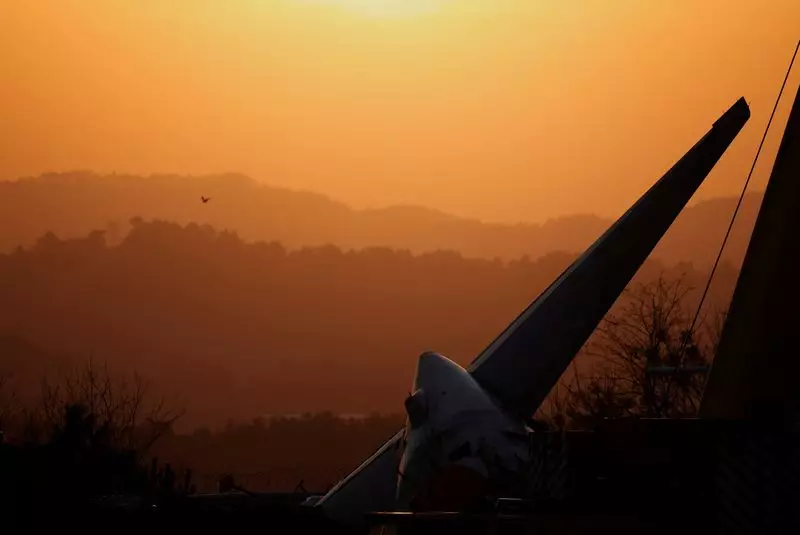The recent aviation disaster involving a Jeju Air Boeing 737-800 that claimed 179 lives has instigated an urgent response from South Korea’s transport authorities. In light of this tragic event, the transport ministry has announced an extension of specialized inspections on all Boeing 737-800 aircraft operated by local airlines. This initiative is a direct reaction to the catastrophic crash, which has shocked the nation and raised significant concerns about aviation safety protocols in South Korea.
The unfortunate incident occurred during a flight from Bangkok to Muan county, where the aircraft experienced a belly landing just short of the runway. As the plane overshot the runway and collided with an embankment, it erupted into flames, resulting in a devastating loss of life. This harrowing event not only underscores the dangers of aviation mishaps but also highlights potential shortcomings in operational readiness and maintenance of aircraft in the country.
Responding to the disaster, South Korea’s transport ministry initially set a timeline to conduct thorough inspections of all 101 Boeing 737-800 aircraft by the originally designated deadline. However, given the gravity of the situation, the deadline has been pushed back to January 10. This decision reflects the ministry’s commitment to ensuring the highest safety standards amidst rising public concern. The inspections will encompass critical components such as engines, maintenance logs, and landing gear, with warnings issued regarding suspension of airlines found violating established protocols.
Collaborative Investigation Efforts
In a bid to unravel the circumstances leading to the crash, South Korean investigators announced their collaboration with the U.S. National Transportation Safety Board (NTSB). A delegation from the South Korean investigative team is set to travel to the United States next week to analyze the flight data recorder. Meanwhile, the team is meticulously reviewing the wreckage and interviewing authorities from the airport control tower to gather firsthand accounts regarding the flight’s operations prior to the crash.
Critical Questions and Emerging Concerns
Significant questions linger in the aftermath of the disaster, particularly about the aircraft’s failure to deploy its landing gear. Eyewitness reports and communications with air traffic control indicate a potential bird strike that had already been reported. Furthermore, investigators are keen to discern why the pilot opted for a second landing attempt despite declaring an emergency situation, raising concerns about decision-making under pressure.
In light of the tragedy, the transport ministry met with senior executives from various airlines to deliberate on strategies for enhancing aviation safety. Investigations into Jeju Air have escalated, leading to restrictions placed on key officials from the airline as authorities seek to understand the operational flaws that could have contributed to the disaster. The gravity of the incident not only pressures Jeju Air but also prompts a nationwide evaluation of operational safety measures across South Korean airlines.
As South Korea grapples with the repercussions of the recent aviation disaster, it is clear that the need for stringent safety protocols has never been more evident. The extension of inspections and the collaboration with international safety boards highlight a collective commitment to prevent such tragedies in the future. The aviation community is, as always, tasked with the dual goal of mastering safety while restoring public confidence in air travel following a deeply unsettling event.

